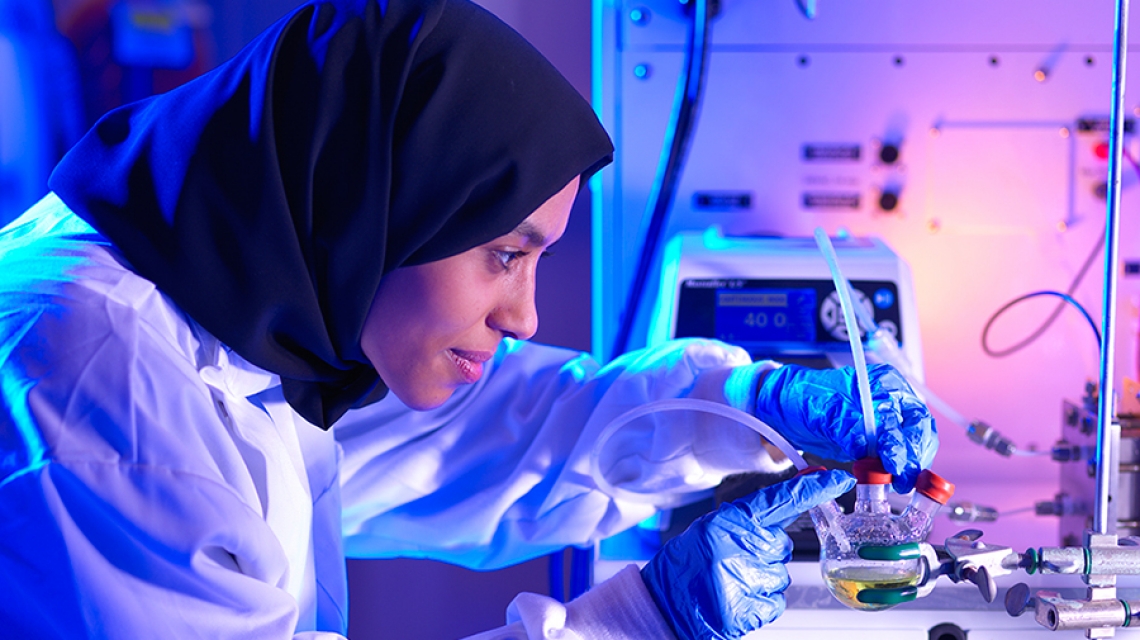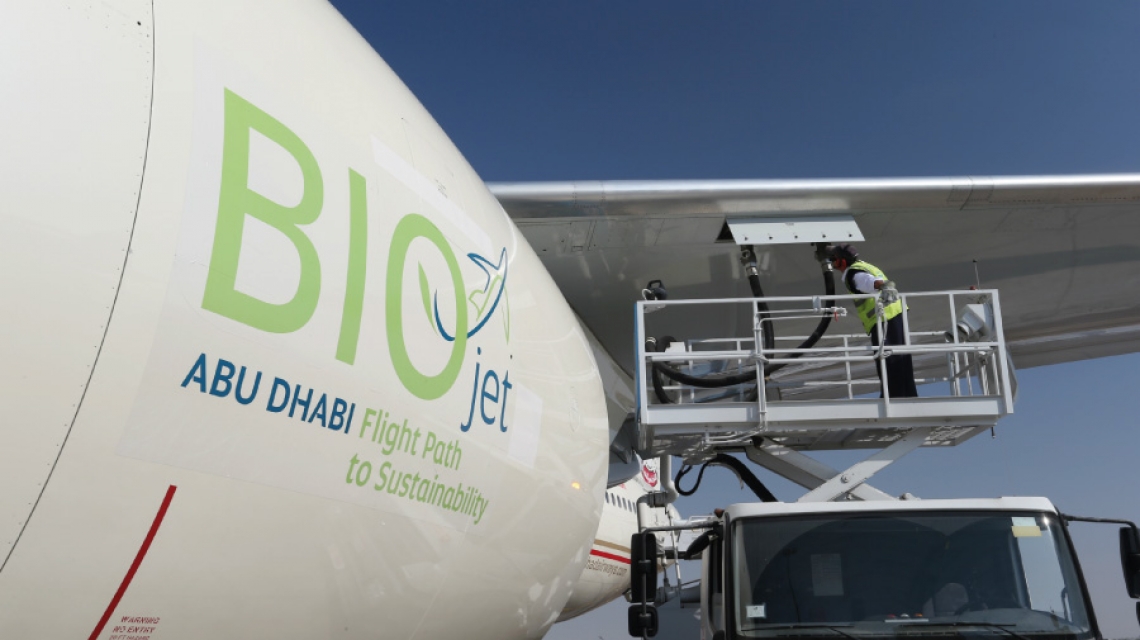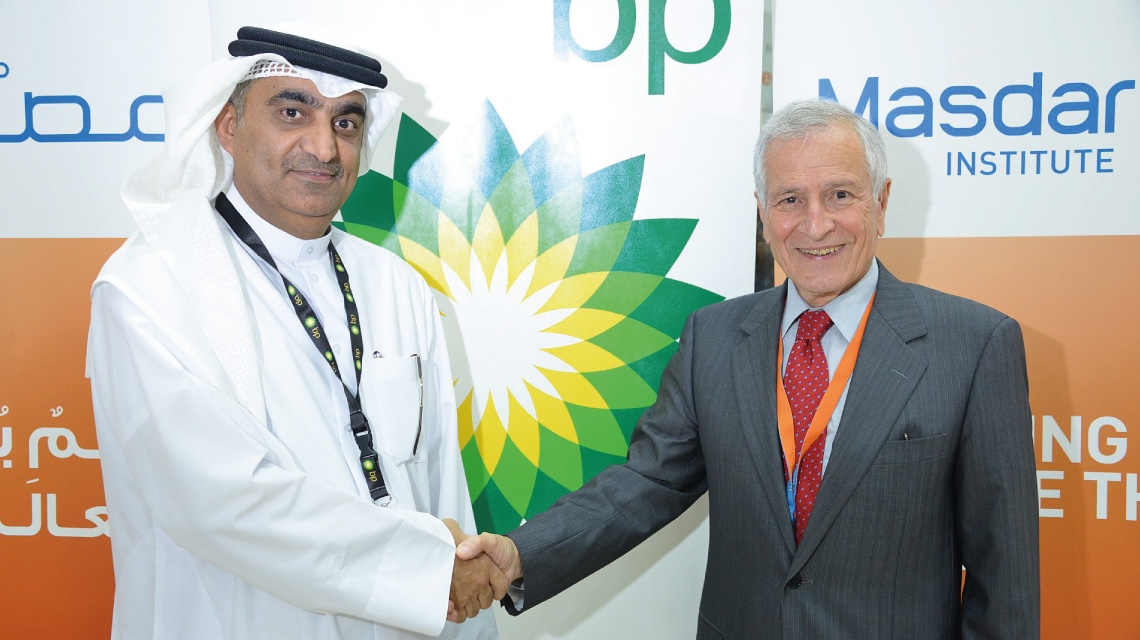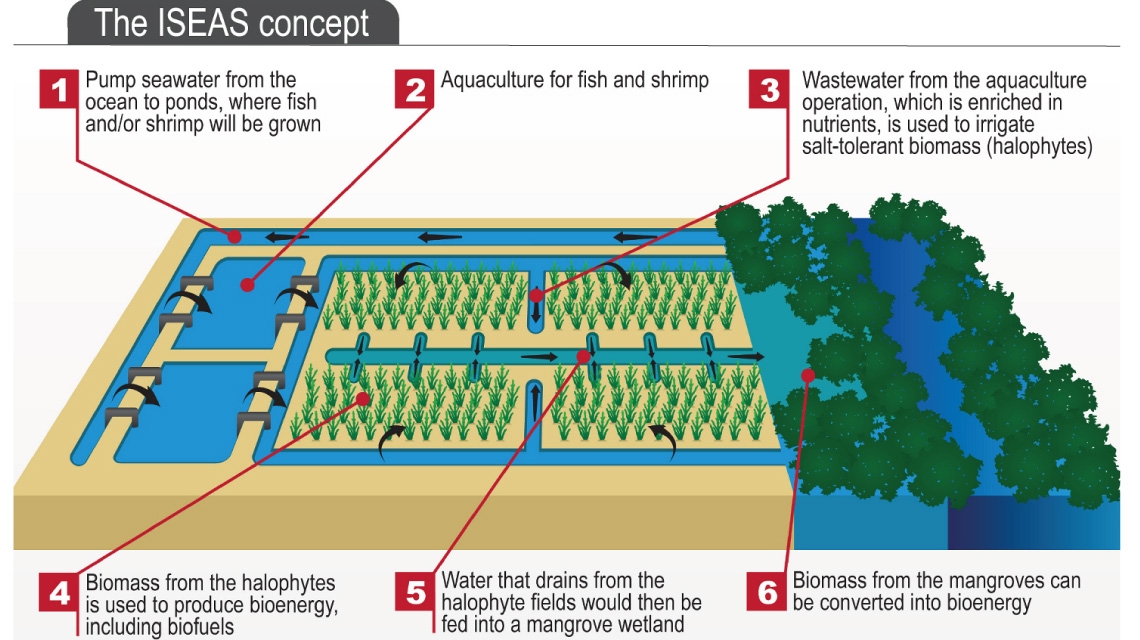
Membraneless flow batteries are emerging as a promising kind of low-cost battery for large-scale energy storage. But if they are to achieve commercial success against other energy storage solutions, they must be designed with scalability in mind.
Many of today’s membraneless flow batteries are designed at the micro-level, at a size no bigger than the palm of your hand. These batteries store and release energy efficiently, but when scaled to a size large enough to generate and store the amount of energy needed to power a single household, they prove ineffective.
To help advance the research and development of membraneless flow batteries, Masdar Institute Assistant Professor of Mechanical and Materials Engineering Dr. Saif Al Mheiri has developed a method for determining whether or not a membraneless flow battery design has the potential to be commercialized. He has presented his findings in a review paper co-authored by his PhD student Musbaudeen Bamgbopa and Dr. Hong Sun from the Shenyang Jianzhu University. The paper was published in the journal of Renewable and Sustainable Energy Reviews in November 2016.
The aim of his work was to develop a method for comparing and contrasting the performance of different membraneless flow battery designs when it comes to their potential utility-scale performance, which is measured in terms of two performance metrics – scalability and electrolyte reusability.
“The performance metrics we developed for reusability and scalability enable researchers designing membraneless flow batteries, or potential investors, to compare different designs for their potential commercial development. We also hope that the performance metrics we developed will direct future research and development of membraneless flow batteries that have a greater potential for large-scale energy storage,” Dr. Al Mheiri remarked.
By creating a method for determining whether or not a design can meet the requirements of a large-scale energy storage system – being scalable and reusable – Dr. Al Mheiri expects that this research will help guide future membraneless flow battery design work.
Through their extensive research of membraneless flow cells reported in the literature from 2004-2016, Dr. Al Mheiri’s team noticed that the focus thus far has been on maintaining separation of the electrolytes without the membrane. “They have missed on other important parameters, including the fact that electrolytes must be reused and that the performance should remain effective even if scaled up,” Dr. Al Mheiri asserted.
A typical membrane-based flow battery includes two electrolytes – one positively charged anolyte and a negatively charged catholyte – which are separated by a membrane. When the two electrolytes flow past the membrane, they exchange ions creating an electric current at electrodes where electrochemical reactions take place. The membrane has the critical role of keeping the electrolytes separated and inducing the ion exchange required to create a current.
However, the membrane in a typical flow battery presents two major challenges – they are the most expensive component in the battery and the most unreliable, as they can become corroded, reducing the battery’s lifetime. To get around these issues, researchers are attempting to design flow batteries without a membrane.
“If you remove the membrane, there is a significant opportunity to reduce the overall cost of the battery. But of course, this introduces a new challenge, where a cell has to be designed in such a way that separation between the two electrolyte solutions is maintained without a membrane,” said Bamgbopa.
To demonstrate the fact that the membraneless flow cells designed over the last decade have neglected the key issues of scalability and electrolyte reusability in their design concepts, Dr. Al Mheiri and his team analyzed the design concepts and categorized them into five main designs. They then found all the designs that fall under each category and selected two of them to compare to validate their performance metrics in comparing designs.
While many of the designs Dr. Al Mheiri’s team studied demonstrated excellent separation at the micro level, once the designs were considered against the scalability performance indicator, they displayed an inability to keep the electrolytes separated. This is a serious flaw, as one of the most important characteristics of a membrane-based flow battery is its ability to easily scale up by increasing the tank sizes that hold the electrolytes. It is essential that a membraneless flow battery demonstrates the same scalability if it is going to be considered as a viable alternative for large-scale energy storage.
“We define a ‘scalable’ design as one in which its performance (particularly fuel utilization, efficiency and electrolyte reusability), at worst doesn’t decrease (could either increase or stay the same) as a result of the upscale,” explained Dr. Al Mheiri.
Another crucial characteristic of a flow battery is its ability to reuse the electrolyte. The same electrolyte is reused repeatedly; in fact, typical membrane-based flow batteries are said to deliver more than 10,000 full cycles with the same electrolyte. The recovery of the charged or discharged electrolyte solution depends on the ease of separation of the electrolyte mixture after the first pass through the system.
However, Dr. Al Mheiri found that this critical feature of reusability was not reflected in the designs reported in the literature.
“Fuel utilization was not present, or reusability, which is one of the new parameters we have introduced. Most of the publications indicate that the designs are good, but when you go back and check, they only performed a single pass of the electrolyte. But in a flow battery, the electrolyte must be continuously reused and cycled back through the battery,” Dr. Al Mheiri remarked.
Dr. Al Mheiri’s team developed a way to determine the feasibility of separating the positive and negative electrolyte streams after a single pass through the battery in each design, expressed as a ratio of electrolyte volumes.
In order for membraneless flow batteries to compete with membrane-based flow batteries, the batteries must be scalable and the electrolytes must be able to be recirculated through the system.
Dr. Almheiri is currently working on a novel design for a membraneless flow battery that meets the two key requirements of scalability and reusability.
Membraneless flow batteries offer a low-cost solution to electrochemical energy storage and have the potential to facilitate widespread use of renewable energy, like solar and wind power, which is why Dr. Al Mheiri wants to see research of membraneless flow batteries continue, but with a new focus on scalability in the design concept. He hopes that his findings will direct future research and development of membraneless flow batteries by enabling researchers to compare and contrast existing designs in order to develop the most efficient and scalable design yet.
Dr. Al Mheiri’s pioneering work to develop a method for determining whether a design meets key performance indicators is a critical step towards ensuring that future membraneless flow battery designs will be able to meet the world’s renewable energy storage needs in the real world.
Erica Solomon
News and Features Writer
16 March 2017






